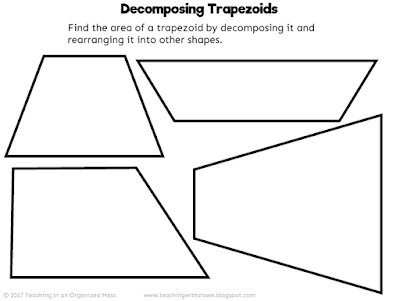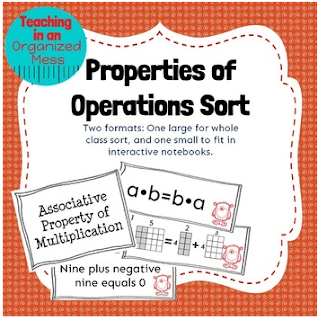It would be easy to give them a worksheet with the shapes on it and all the measurements given and they just have to plug the numbers into the formula the solve.
Worksheets can be useful, but when there is a way to not do a worksheet, do it.
I did this activity last year and wish I would have saved all the shapes I made. So I remade them again and laminated them.
I drew 10-12 triangles, parallelograms, and trapezoids each. I spread them around the room and asked the students to find the area of the shapes. They measured everything to the nearest centimeters.
To make them talk to each other about it, I asked them to verify their answers with their classmates. I put a large poster at the front of the room with a table of the shapes. Once students have verified their answers with 3 other classmates, they could start adding the area of the shapes to the poster.
Once I made and laminated all the shapes, the activity was easy to put together. I didn't even use any copies! Just notebook paper.
If you dont want to draw your own shapes, you can use this file here. Download it for free.
Here is another way for students to practice finding the area of polygons fro my TpT store.
.
In Texas, 6th graders are to "determine solutions for problems involving the area of rectangles, parallelograms, trapezoids, and triangles and volume of right rectangular prisms where dimensions are positive rational numbers."






















